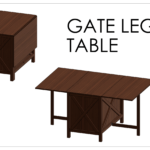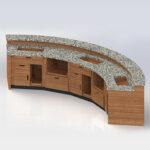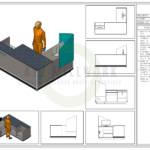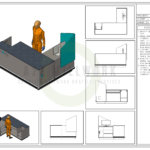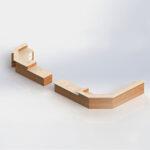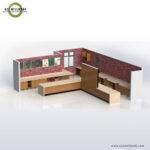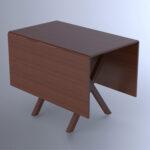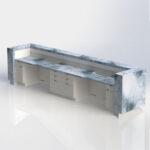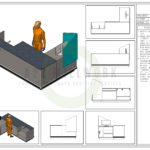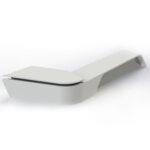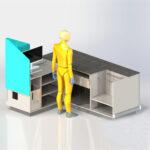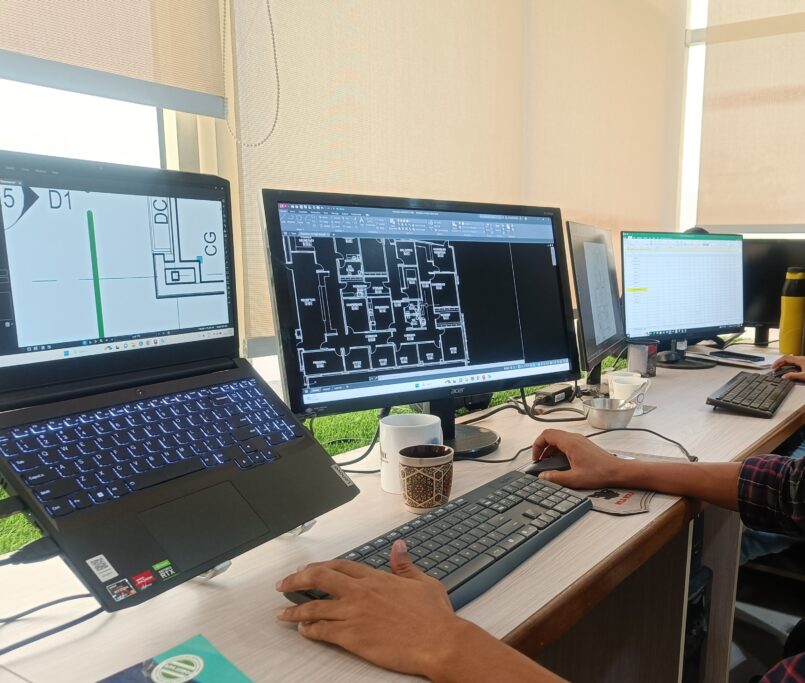When it comes to Millwork Drafting services, businesses often face a crucial decision: should they outsource CAD services or rely on in-house drafting? This choice significantly impacts efficiency, cost, and quality of the final product. This blog delves into the differences between these two approaches, their respective advantages and disadvantages, and provides a clear recommendation based on quantitative data and industry trends, particularly in the USA.
Understanding Millwork Shop Drawings
Millwork Shop Drawings are detailed representations of custom woodwork designs. These drawings are essential for ensuring precision and clarity in the manufacturing process. Accurate millwork shop drawings facilitate smooth communication between designers, fabricators, and installers, leading to high-quality custom woodwork.
In-house Millwork Drafting Services
Advantages:
- Control and Coordination: In-house teams provide direct control over the drafting process. Immediate coordination and communication are easier, leading to faster problem resolution and more cohesive project management.
- Confidentiality: Maintaining sensitive project information in-house reduces the risk of data breaches and ensures confidentiality.
- Immediate Feedback: Direct access to the design team allows for immediate feedback and adjustments, enhancing responsiveness and flexibility.
Disadvantages:
- Higher Costs: In-house drafting requires significant investment in skilled personnel, software, and hardware. Salaries, benefits, and training costs can be substantial.
- Limited Expertise: In-house teams might lack specialized skills required for complex projects. Their experience is often limited to the company’s scope of work, which might hinder innovation and efficiency.
- Scalability Issues: Scaling in-house teams to meet fluctuating project demands can be challenging and costly. It often results in either underutilization or overburdening of resources.
Outsourcing CAD Services
Advantages:
- Cost Efficiency: Outsourcing CAD services can significantly reduce operational costs. Companies save on salaries, benefits, training, and overhead expenses. According to a report by Deloitte, businesses can save up to 60% on operating costs through outsourcing.
- Access to Expertise: Outsourcing firms often employ highly specialized professionals with extensive experience in millwork shop drawings. This expertise can enhance the quality and precision of the drawings.
- Scalability and Flexibility: Outsourcing provides flexibility to scale resources up or down based on project needs. It ensures timely delivery without the constraints of maintaining a full-time team.
- Advanced Technology: Outsourcing firms typically invest in the latest CAD software and technologies, ensuring high-quality outputs and efficient processes.
Disadvantages:
- Communication Barriers: Working with remote teams can sometimes lead to communication challenges and time zone differences, potentially causing delays.
- Confidentiality Concerns: Sharing sensitive project information with third parties poses a risk of data breaches. However, reputable outsourcing firms implement robust security measures to mitigate these risks.
Is Outsourcing Millwork Shop Drawings a Good Idea?
Outsourcing millwork shop drawings is indeed a good idea for many businesses. The cost savings and access to specialized expertise are compelling reasons. According to Statista, the global outsourcing market was valued at $92.5 billion in 2019, with significant contributions from the USA. This trend indicates a strong preference for outsourcing among businesses looking to optimize costs and enhance efficiency.
Why Outsource CAD Drafting Services?
- Quantitative Benefits: A study by the National Association of Manufacturers revealed that companies can achieve up to 30% cost reduction through outsourcing. This is primarily due to lower labor costs and reduced overhead expenses.
- Focus on Core Competencies: Outsourcing allows companies to focus on their core competencies and strategic goals. By delegating drafting services to external experts, businesses can allocate more resources to innovation and growth.
- Improved Quality: Outsourcing firms employ skilled professionals with specialized knowledge in CAD drafting. Their experience and expertise lead to higher quality millwork shop drawings, reducing errors and ensuring precision.
In-house vs. Outsourced: A Comparative Analysis
Aspect | In-house Drafting | Outsourced Drafting |
Cost | High (salaries, benefits, training) | Lower (operational cost savings) |
Expertise | Limited to internal capabilities | Access to specialized professionals |
Scalability | Challenging and costly | Flexible and easily scalable |
Control | Direct control | Indirect, requires effective communication |
Technology | Requires continuous investment | Outsourcing firms use latest technology |
Confidentiality | High | Moderate (depends on firm’s security measures) |
Recommendation
Based on the analysis, outsourcing CAD drafting services, including millwork shop drawings, is the recommended approach for most businesses. The cost efficiency, access to specialized expertise, and scalability outweigh the benefits of in-house drafting. With proper vetting and selection of a reputable outsourcing firm, the potential drawbacks such as communication barriers and confidentiality concerns can be effectively managed.
Conclusion
A2Z Millwork Design is a leading provider of CAD outsourcing, Millwork Drafting services, custom woodwork shop drawings, and Microvellum shop drawings. By choosing A2Z Millwork Design, businesses can leverage the benefits of outsourcing while ensuring high-quality outputs and efficient project management. With a focus on customer satisfaction and adherence to industry standards, A2Z Millwork Design is your trusted partner for all your millwork drafting needs.
In conclusion, while both in-house and outsourced drafting services have their merits, outsourcing stands out as the more viable option for achieving cost efficiency, high quality, and flexibility in today’s competitive market.


